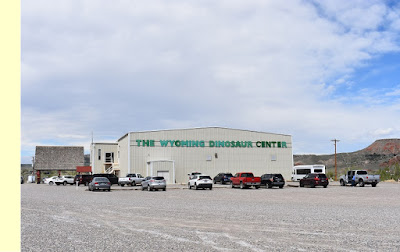What the camera had been telling me was that it would put the picture I just shot on the reviewing screen, but it wouldn't be moving that image to memory. I thought that since I could see the image, the image was being saved. I had never seen the little red warning before and thought I could troubleshoot the problem back in the RV.
So right after breakfast today we went back to the Montrose Botanical Garden to begin at the beginning. Lots of the photo setups I could still remember, so I could easily repeat them. Others I probably missed today while no doubt interjecting others I hadn't taken yesterday. I guess it really doesn't matter since most of them will be used for garden-setup ideas, or suggestions for plants that thrive in the high desert. We just love what we turn up on these trips in the way of garden design, and every shot is potentially food for thought.
Yesterday Concetta and I were alone in the gardens. But today there were more folks touring with us. Still, the grounds are large enough so that you're really not tripping over each other. Besides, most of the others strolling the garden paths stayed only briefly. As for us, we always have trouble tearing ourselves away so we ended up staying until nearly lunchtime.For lunch we decided to drive ourselves into the country toward the Colorado town of Ouray and pick the ideal spot beside a rushing river with snow-capped peaks in the distance. Yes, we knew this was a sort of "pie-in-the-sky" search, but we were hopeful. We tried a couple of potential sites as we climbed in elevation, but they didn't suit.
Then, out of the blue, a roadside sign announced that a hiker's trailhead access was on the right, and we took that slender road down into the canyon of the Uncompahgre River and eased into a tiny parking lot. A couple of mountain bikers, who arrived about the same time we did, sort of looked at us quizzically as we nestled in at the edge of the tiny parking lot and turned off the engine. But in the end they shrugged and rode on down the road.
Incredibly enough, the spot that we had randomly picked turned out to be just a few paces from a rushing river, and the whole scene was backed up by snow-capped mountains way off to the east of us. The surrounding terrain looked very much like the sage and sand we're used to in Carson City. Plus, here and there, tiny orange wildflowers had somehow captured a bit of space between the various sage plants and seemed to be thriving despite their diminutive size.
After lunch we put on our hiking boots and headed down to the Uncompahgre River and the adjacent park to see what we could see. Dark clouds festooned the heavens, but every once in while the sun would poke through the clouds making an occassional photograph possible.At the park entrance we encountered a plaque identifying the small sanctuary beside the river as the "Dennis Weaver Memorial Park." Concetta did the research and discovered the Dennis Weaver on the plaque was the same Dennis Weaver in the TV Show "Gun Smoke."
I found this information on the web about the Dennis Weaver Park: "The Dennis Weaver® Memorial Park is a magical place of reflection and relaxation dedicated to the memory and vision of actor/environmentalist Dennis Weaver."
"This 80-acre public park is a permanent wildlife preserve along the lush Uncompahgre River corridor and is at the entrance to Dennis Weaver’s eco-friendly RiverSage Subdivision surrounded by 130 acres of open green space including the park. Within the park are miles of winding hiking and biking trails with spectacular mountain and river vistas."
The theme of Weaver's park is living your life as free as the eagle. To that end, the designers have used a large sculpture of sandstone blocks topped by a truly giant eagle. On the sandstone blocks visitors are encouraged to pile three small stones of their own, one atop another, and leave them standing tall on the sculpture. We found the idea pretty uplifting and spiritual and promptly found our own stones and did our tiny sculptures as so many had done before us.After stretching our lunch hour well into the afternoon, we loaded up and headed back to Montrose, stopping briefly for yours truly to do some antiques shopping. On our way up the mountain we had seen a stretch Route 550 with no less than four antique shops arranged side-by-side. There was no way to pass up an opportunity like that.
Not finding any antiques that I wanted, though I really tried hard, we were soon back on the road toward Montrose. Stopping only to top up the tank for tomorrow's drive to Green River, Utah, and to pick up some groceries, we were back in camp by cocktail hour. Yesterday might have been a disappointment, but today MORE THAN made up for it. Someday we'd like to come back to Montrose, pick a camp somewhere along today's route, and stay a few more days. There's a lot to do here, and we certainly had a great time.





























